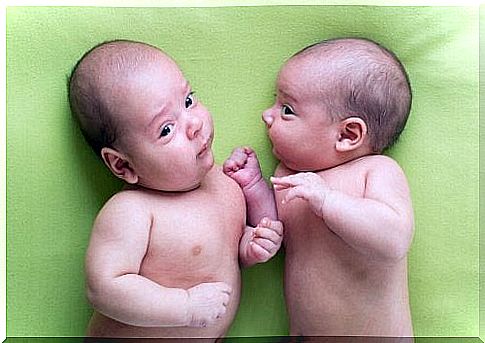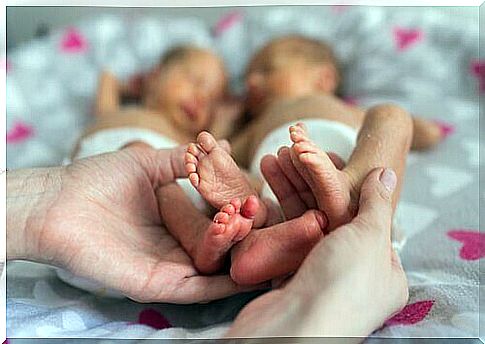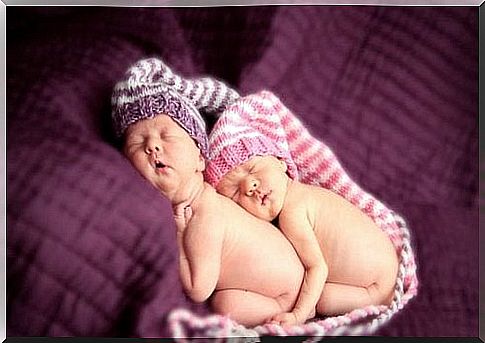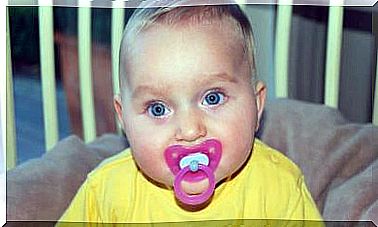Giving Birth To Twins: What Does That Change? – Being Parents

Pregnancy is both a wonderful and complicated experience for women, especially those with twin pregnancies. Giving birth to twins who share or do not share the same amniotic sac is clearly different from a normal childbirth.
We always hear that there are risks associated with pregnancy with more than one fetus and there are reasons for this claim. Preeclampsia, intrauterine growth retardation, and many other complications are things that keep mothers and doctors on alert.
While it shouldn’t be harder to give birth to twins, sometimes it can be. There is a risk of perinatal or neonatal death, as more than one life is involved in the birthing process.
However, the outcome of childbirth depends on the mother’s medical checks and examinations and on constant previous care. You should not let yourself be carried away by fear before you are in danger and you should try to carry the pregnancy to term as much as possible without stress.
The mother should follow her instincts and recognize the risks that exist, so she can be proud and happy to bring her children home. If you want to be more peaceful and feel more secure, your best bet is to get in touch with an obstetrician who specializes in twin births, both natural and by caesarean section.
It’s about genetics
It is not very common to expect twins or more. This can happen through natural blood inheritance, with in vitro fertilization or as a result of fertility treatment.
Not all women have the physical capacity to conceive and bear more than one fetus. If there are other cases of twin or multiple pregnancy in the family, then it can happen again.

Twins are usually born into families that have had twins in the past, both maternal and paternal. Of course, this is not a hard and fast rule.
Some women with no history of twin pregnancies in their families have had multiple pregnancies. However, this happens less often than for those who have twin pregnancies in their family.
Differences from normal childbirth
Medically, a normal birth is when it starts naturally, goes without complications, and involves only one baby. Usually, the mother can give birth between the 37th and 42nd week of pregnancy without any risk to the mother or the baby.
The delivery of twins is usually premature, around the 36th week of pregnancy, due to the weight of the babies or the relaxation of the uterus. The space in the uterus becomes smaller and smaller, and the placenta loses its ability to properly nourish each baby.
The delivery of twins can happen naturally or by cesarean section, the latter is more used for this type of birth. However, women report that they have recovered better and faster after natural childbirth.
It depends on the position of the babies in the womb. If both babies are upside down, then a natural delivery can be considered.
However, it is impossible to predict their position. Therefore, when the first baby is born, the doctor assesses the situation and takes action. In the event that babies share the same amniotic sac, placenta, or vital organ, the doctor performs a cesarean section.

Is giving birth to twins more painful?
Giving birth to twins is not more or less painful, the only thing that changes is the duration of the birth. When the first baby is born, the second takes between 15 and 45 minutes to be born.
Compared to a normal childbirth, giving birth to twins is a bit more intense. This does not involve more suffering, as babies are usually smaller and therefore easier to deliver.
Whether it is natural or assisted, the delivery of several children is a happy event that brings joy and a lot of love. If you are a future mother of twins, having no fear, giving birth to twins is nothing but a duplicate blessing in your life.
So, get ready for a double enthusiasm for this awe-inspiring event. Remember that not many women can give birth to two babies at the same time.









